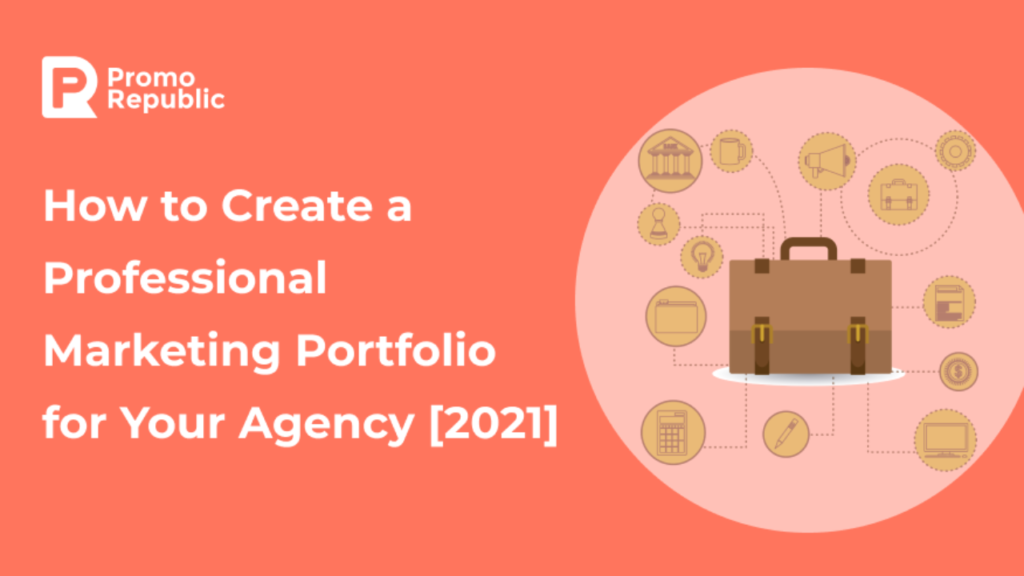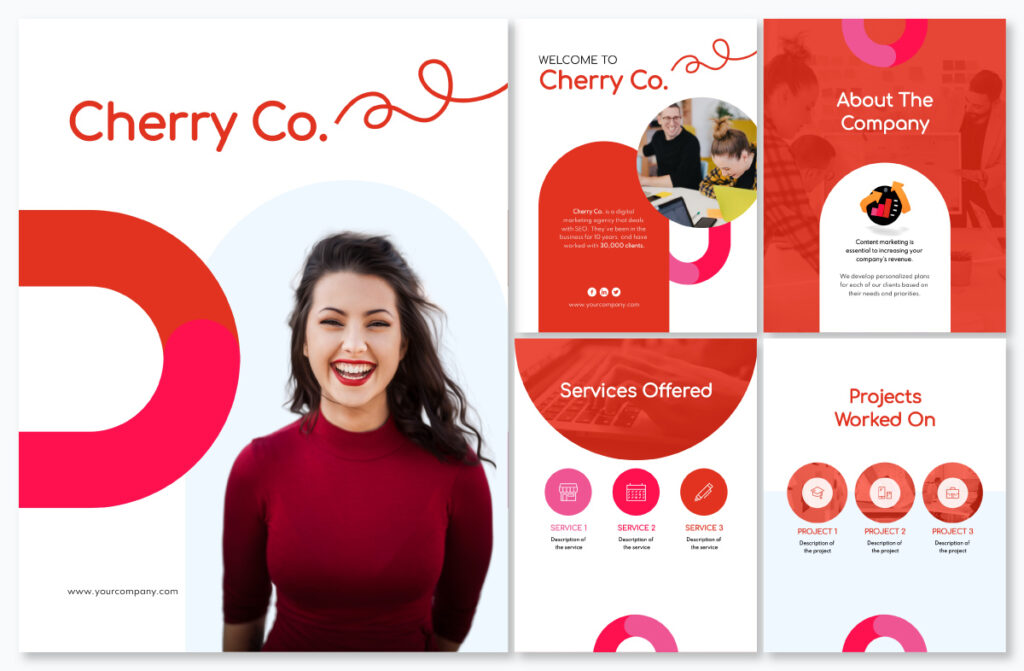
So you’re in the exciting process of starting your own advertising agency and now you’re wondering how to build an impressive portfolio that will attract clients and showcase your talent. Well, look no further because we’ve got you covered! In this article, we will guide you through the steps of building a stellar portfolio for your advertising agency, from selecting the right projects to showcasing them in the most effective way. Building a portfolio that truly represents your agency’s capabilities is crucial, and with our tips, you’ll be well on your way to success.
1. Understand the Importance of a Portfolio
1.1 Showcasing Your Work and Expertise
As an advertising agency, showcasing your work and expertise is essential for attracting potential clients. Your portfolio serves as a visual representation of your capabilities, allowing others to see the quality and creativity of your work. By including examples of your past projects, you can demonstrate your ability to develop effective advertising campaigns, design compelling visuals, and create engaging content. A well-curated portfolio allows potential clients to envision how you can bring their brand to life and achieve their marketing goals.
1.2 Convincing Potential Clients
A strong portfolio is a powerful tool for convincing potential clients that your agency is the right choice for their advertising needs. When reviewing your portfolio, clients will look for evidence of your experience and expertise in their industry or niche. By including case studies and success stories related to their specific market, you can establish credibility and demonstrate your understanding of their unique challenges and opportunities. Your portfolio should showcase your ability to deliver results and provide persuasive evidence that your agency is the best fit for their requirements.
1.3 Differentiating From Competitors
In a competitive industry like advertising, it is crucial to differentiate your agency from competitors. Your portfolio presents an opportunity to highlight what sets you apart and makes you the preferred choice for clients. Consider showcasing your unique selling proposition and the distinctive qualities that make your agency stand out. Whether it’s your innovative approach, specialized expertise, or exceptional creativity, your portfolio should communicate the value you bring to clients and position your agency as the top choice in the market.
2. Define Your Target Audience and Niche
2.1 Identify Your Ideal Clients
Defining your target audience is essential for creating a portfolio that resonates with potential clients. Take the time to identify and understand the characteristics, preferences, and needs of your ideal clients. Consider factors such as industry, company size, geographic location, and marketing objectives. By gaining a clear understanding of your target audience, you can tailor your portfolio to showcase work that is most relevant and appealing to them.
2.2 Determine Your Agency’s Specialty
To stand out in a saturated market, it is beneficial to determine your agency’s specialty. Identify the specific advertising services or industries in which your agency excels. Whether it’s digital marketing, social media advertising, or print campaigns, focus on showcasing your expertise in your chosen specialty. By positioning your agency as a specialist, you can attract clients who are specifically seeking your unique services and increase your chances of securing high-quality projects.
2.3 Tailor Your Portfolio to Fit Your Target Audience
Once you have identified your target audience and defined your agency’s specialty, tailor your portfolio to align with their needs and preferences. Take a strategic approach to selecting and presenting your work samples, ensuring they reflect the specific requirements and challenges of your target audience. Showcase projects that resonate with their industry and convey your ability to solve their unique advertising problems. By demonstrating your familiarity with their market, you can build trust and establish a connection with potential clients.

3. Gather High-Quality Samples and Projects
3.1 Showcase a Variety of Projects
When building your portfolio, it is important to showcase a variety of projects to demonstrate your versatility and range of capabilities. Include samples from different industries, types of advertising campaigns, and target audiences. This diversity not only showcases your ability to adapt to different client needs but also presents potential clients with a broader perspective of your skills and experience. By including a variety of projects, you can cater to a wider range of potential clients and increase your chances of attracting diverse opportunities.
3.2 Include Diverse Formats and Industries
In addition to showcasing a variety of projects, be sure to include samples in diverse formats and industries. This can include digital campaigns, print advertisements, video commercials, website designs, social media campaigns, and more. By highlighting your expertise across different formats and industries, you can demonstrate your adaptability and show potential clients that you can effectively promote their brand regardless of the medium or industry. The more diverse your portfolio, the more confident potential clients will feel in your ability to handle their specific advertising needs.
3.3 Highlight Successful Campaigns
While it’s important to showcase a variety of projects, don’t forget to highlight your most successful campaigns. These should be projects that have generated significant results for your clients, whether it’s increased brand awareness, higher sales, or a positive impact on their bottom line. By featuring successful campaigns prominently in your portfolio, you can build credibility and instill confidence in potential clients. Be sure to include relevant data and metrics to support your claims of success and reinforce your agency’s capability to deliver tangible results.
4. Create a Professional and Engaging Website
4.1 Invest in a User-Friendly Design
When it comes to your advertising agency’s portfolio, the design of your website is crucial. Invest in a user-friendly design that ensures a seamless and intuitive browsing experience for potential clients. Consider factors such as navigation, visual appeal, and responsive design for mobile devices. Your website should be easy to navigate, with clear categories and sections that allow potential clients to explore your portfolio effortlessly. A visually appealing design that aligns with your agency’s branding enhances the overall impression and professionalism of your portfolio.
4.2 Organize Your Portfolio Effectively
One of the keys to creating an impactful portfolio is organizing it effectively. Divide your portfolio into logical categories, such as industry, campaign type, or target audience. This allows potential clients to quickly find examples of your work that are most relevant to their needs. Additionally, consider creating separate sections to showcase case studies, success stories, and testimonials. This organizational structure helps potential clients find the information they’re looking for efficiently, making it easier for them to assess your agency’s capabilities and expertise.
4.3 Use High-Quality Visuals and Descriptions
Your portfolio should incorporate high-quality visuals and compelling descriptions to effectively showcase your work. Use professional-quality images, videos, and screenshots to present your projects in the best possible light. Images should be crisp, clear, and visually engaging, while videos should be of a professional standard. Alongside visuals, provide concise and persuasive descriptions that highlight the key objectives, strategies, and outcomes of each project. Well-crafted descriptions help potential clients understand the context and results of your work and further reinforce your agency’s expertise.

5. Leverage Social Media Platforms
5.1 Utilize LinkedIn to Display Expertise
LinkedIn is a valuable social media platform for advertising professionals. Create a professional and compelling LinkedIn profile that showcases your agency’s expertise and past projects. Utilize the platform’s features, such as the “Featured” section, to highlight key projects and link them back to your portfolio website. Consistently engage with relevant industry groups and share insightful articles or industry updates to position yourself as an expert in your field. Connecting with potential clients, industry leaders, and influencers on LinkedIn can further expand your network and increase visibility for your agency.
5.2 Share Work on Instagram and Pinterest
Instagram and Pinterest provide visually-oriented platforms perfect for showcasing your agency’s visuals and designs. Create visually appealing posts that highlight your best work, behind-the-scenes glimpses of your projects, or highlight successful campaigns. Utilize relevant hashtags and tag relevant accounts or brands to increase visibility and engagement. Consistency and high-quality visuals are key on these platforms, so ensure your posts align with your agency’s brand and style.
5.3 Engage with Potential Clients on Twitter
Twitter offers a platform for real-time conversations and engagement with potential clients. Share updates on your agency’s latest projects, industry news, or thought leadership content to demonstrate your expertise. Engage in conversations with clients, industry influencers, and thought leaders to build relationships and establish your agency’s presence. Use Twitter as a platform to showcase your agency’s personality, highlight your expertise, and connect with potential clients on a more personal level.
6. Network and Collaborate with Other Professionals
6.1 Attend Advertising Industry Events and Conferences
Networking plays a crucial role in the success of your advertising agency. Attend industry events, conferences, and trade shows to connect with other professionals in the field. These events provide opportunities to meet potential clients, establish partnerships, and learn about the latest industry trends and innovations. Be prepared with business cards and a concise elevator pitch about your agency. Actively engage in conversations, participate in panel discussions, and take advantage of any networking sessions or social events to expand your professional network.
6.2 Establish Relationships with Influencers
Influencer marketing has become an integral part of advertising strategies. Establish relationships with influential individuals in your industry to collaborate on projects and enhance your agency’s reputation. Influencers can provide valuable insights, endorsements, and exposure to their audience, thereby enhancing your agency’s reach and credibility. Consider partnering with influencers on joint campaigns or projects that align with your agency’s expertise and values. These collaborations can not only amplify your portfolio but also attract new clients who are interested in working with agencies that have connections to influential figures.
6.3 Collaborate with Clients for Testimonials
Happy clients make for powerful advocates for your agency. Collaborate with satisfied clients to collect testimonials and feedback to include in your portfolio. Ask clients to share their experiences, the results they achieved through your agency’s work, and the value they received from partnering with you. With their permission, showcase these testimonials on your website and other marketing materials. Testimonials serve as proof of your agency’s capabilities and provide potential clients with valuable insights into the benefits of working with you.

7. Adapt Your Portfolio to Evolving Trends
7.1 Stay Updated on Industry Innovations
The advertising industry is constantly evolving, with new trends and technologies emerging regularly. Stay updated on the latest industry innovations and trends to ensure your portfolio remains relevant and competitive. Subscribe to industry publications, attend webinars, and follow thought leaders in the advertising and marketing space. This knowledge will help you incorporate the latest techniques and strategies into your portfolio, demonstrating your agency’s ability to stay ahead of the curve and deliver cutting-edge solutions to clients.
7.2 Embrace New Media Channels and Technologies
As new media channels and technologies emerge, it is important to embrace them and incorporate them into your portfolio. This could include platforms like TikTok or emerging technologies like virtual reality or augmented reality. Experiment with these new channels and technologies by creating campaigns or concepts that showcase your agency’s innovative approach. By demonstrating your expertise in utilizing new media channels and technologies, you can attract clients who are looking for forward-thinking advertising solutions.
7.3 Reflect Current Design and Communication Trends
Design and communication trends evolve over time, and it’s essential to reflect these trends in your portfolio. Stay abreast of the latest design trends, typography styles, color schemes, and visual aesthetics in the advertising industry. Incorporate these trends into your portfolio’s design and presentation to demonstrate that your agency’s work is modern, fresh, and aligned with current market preferences. Being up-to-date with design and communication trends shows potential clients that your agency is adaptable and able to create captivating and relevant campaigns.
8. Optimize Your Portfolio for SEO
8.1 Research Relevant Keywords for Your Niche
Search engine optimization (SEO) can significantly impact the visibility and discoverability of your portfolio. Research relevant keywords related to your agency’s niche and target audience. Use tools like Google Keyword Planner or SEMrush to identify keywords with high search volume and low competition. Incorporate these keywords strategically into your portfolio’s content, including headings, descriptions, and metadata. By optimizing your portfolio for SEO, you can improve your website’s ranking in search engine results pages and attract organic traffic from potential clients searching for advertising agencies.
8.2 Optimize Your Website’s Metadata
In addition to incorporating relevant keywords, optimize your website’s metadata to improve its visibility in search engine results. Craft attention-grabbing meta titles and compelling meta descriptions that entice potential clients to click through and explore your portfolio. Ensure that each page of your portfolio has unique and descriptive meta tags that accurately represent the content within. Well-optimized metadata can improve your website’s click-through rate and increase the likelihood of potential clients engaging with your portfolio.
8.3 Create Engaging Content with Targeted Keywords
To further optimize your portfolio for SEO, create engaging and informative content around targeted keywords. Develop blog posts, articles, or case studies that delve into topics relevant to your agency’s specialization. Incorporate your targeted keywords naturally within the content to maximize its SEO potential. Well-written and informative content not only improves your website’s visibility but also positions your agency as a valuable resource for potential clients seeking advertising expertise.

9. Incorporate Case Studies and Success Stories
9.1 Highlight the Problem and Solution
Incorporating case studies and success stories is an effective way to demonstrate your agency’s problem-solving capabilities. Clearly outline the challenges or problems your clients faced and how your agency devised a unique and effective solution. Explain the strategies, tactics, and creative concepts you employed to overcome these challenges. By presenting the problem and solution, you showcase your agency’s ability to navigate complex advertising hurdles and deliver impactful results for clients.
9.2 Showcase the Results and Impact
When presenting case studies and success stories, emphasize the tangible results and impact of your agency’s work. Include data and metrics that illustrate the success of your campaigns, such as increased brand awareness, website traffic, sales, or social media engagement. Additional testimonials from satisfied clients can help reinforce the positive impact your agency has had on their business. By showcasing the outcomes and impact of your work, potential clients can better understand the value your agency can bring to their advertising efforts.
9.3 Use Engaging Visuals and Testimonials
To make your case studies and success stories more compelling, incorporate engaging visuals and testimonials. Use visually appealing infographics or charts to present data and statistics in an easy-to-understand format. Additionally, include quotes or testimonials from clients that highlight their satisfaction with your agency’s services. Well-designed visuals and genuine testimonials can bring life to your case studies, making potential clients more likely to connect with your work and envision similar success for their own brands.
10. Continuously Update and Refresh Your Portfolio
10.1 Remove Outdated or Irrelevant Projects
To keep your portfolio fresh and impactful, periodically review and remove outdated or irrelevant projects. Over time, certain projects may become less relevant due to shifts in the industry or changes in your agency’s focus. Remove any projects that no longer reflect your agency’s current expertise or the type of work you want to attract. Presenting a streamlined and up-to-date portfolio ensures potential clients see your agency’s best work and recent achievements.
10.2 Add New and Exciting Work Regularly
As you complete new projects, regularly update your portfolio to include your latest and most exciting work. Add new case studies, success stories, and visuals that showcase your agency’s recent achievements. Highlight any innovative features, strategies, or technologies utilized in these projects. By regularly adding new content, you demonstrate that your agency is constantly evolving and staying at the forefront of the advertising industry, attracting potential clients who prioritize fresh and cutting-edge solutions.
10.3 Seek Feedback and Improve
Continuously seek feedback from colleagues, clients, and industry professionals to improve and refine your portfolio. Encourage constructive criticism to identify areas for improvement and ensure your portfolio accurately reflects your agency’s strengths and capabilities. Actively listen to feedback and make necessary adjustments to enhance the overall quality and effectiveness of your portfolio. By seeking feedback and making improvements, you can create a portfolio that consistently impresses potential clients and drives the success of your advertising agency.
In conclusion, building a comprehensive and compelling portfolio for your advertising agency requires a strategic and multifaceted approach. By understanding the importance of a portfolio, defining your target audience and niche, gathering high-quality samples and projects, creating a professional and engaging website, leveraging social media platforms, networking with other professionals, adapting to evolving trends, optimizing for SEO, incorporating case studies and success stories, and continuously updating your portfolio, you can enhance your agency’s credibility, attract potential clients, and succeed in the competitive advertising industry. Remember to showcase your expertise, showcase your success, and always strive for continuous improvement to stand out and thrive in the dynamic world of advertising.






